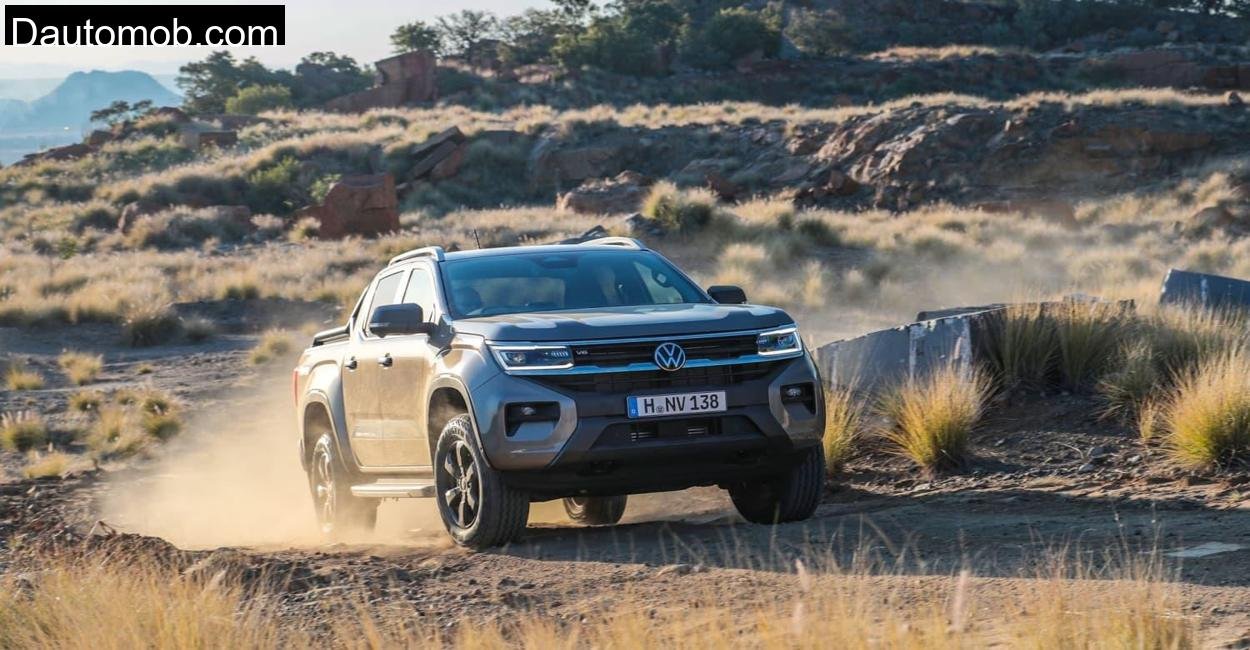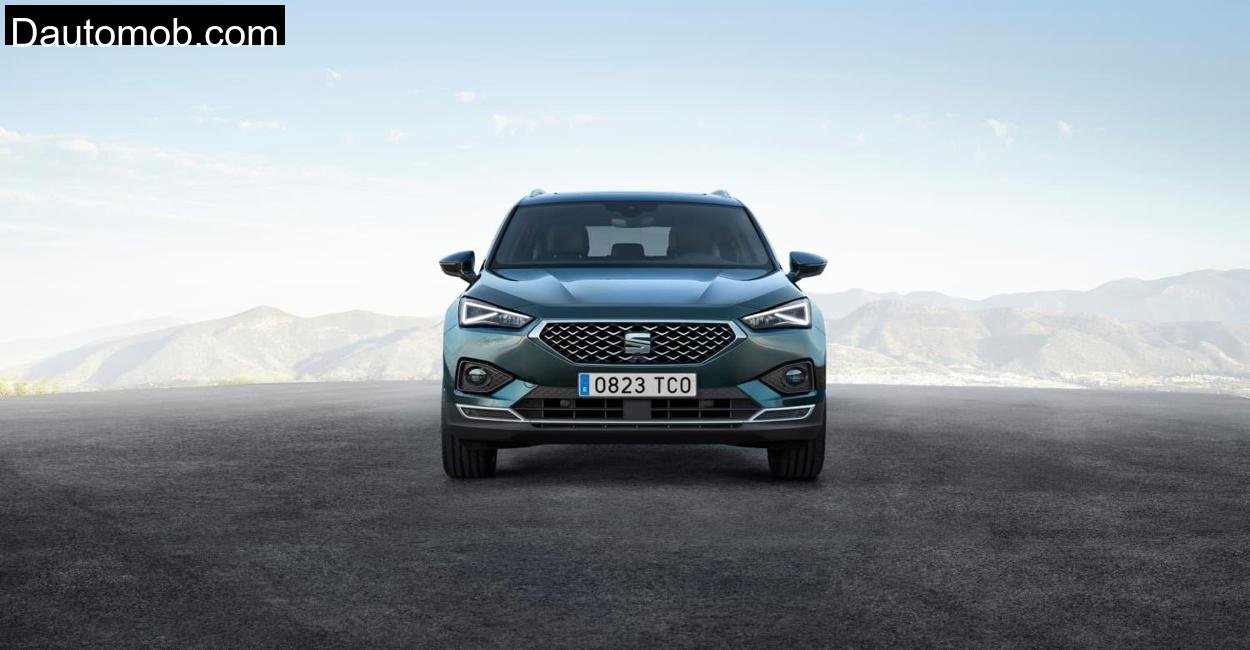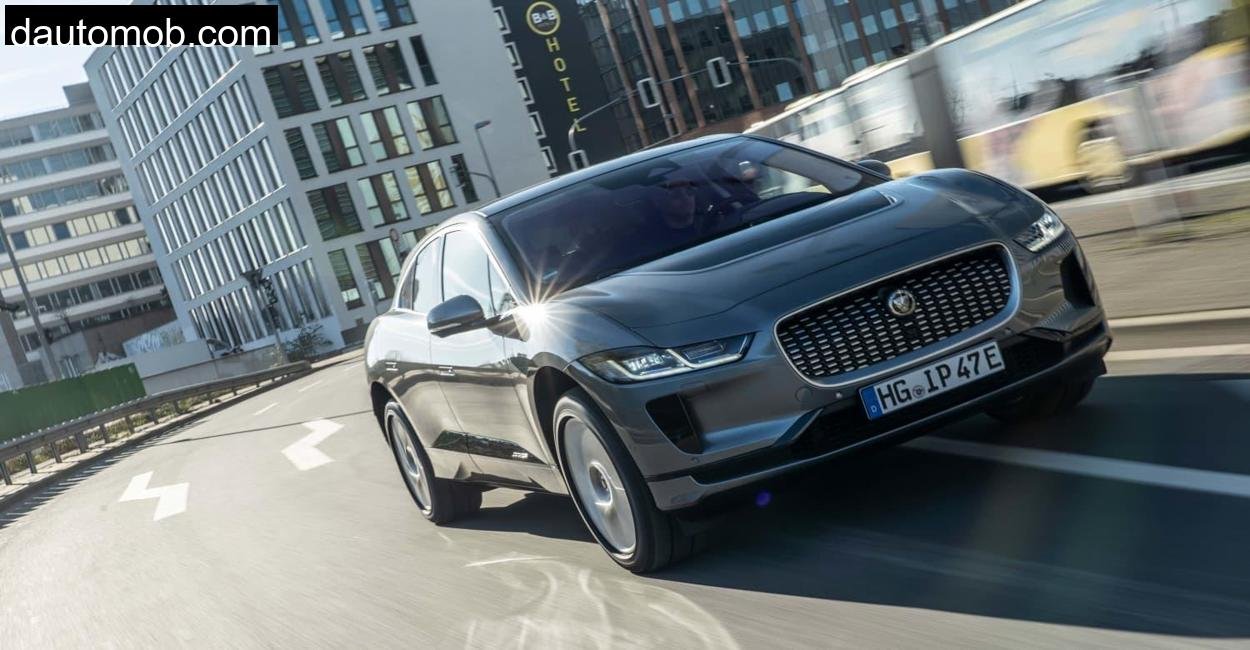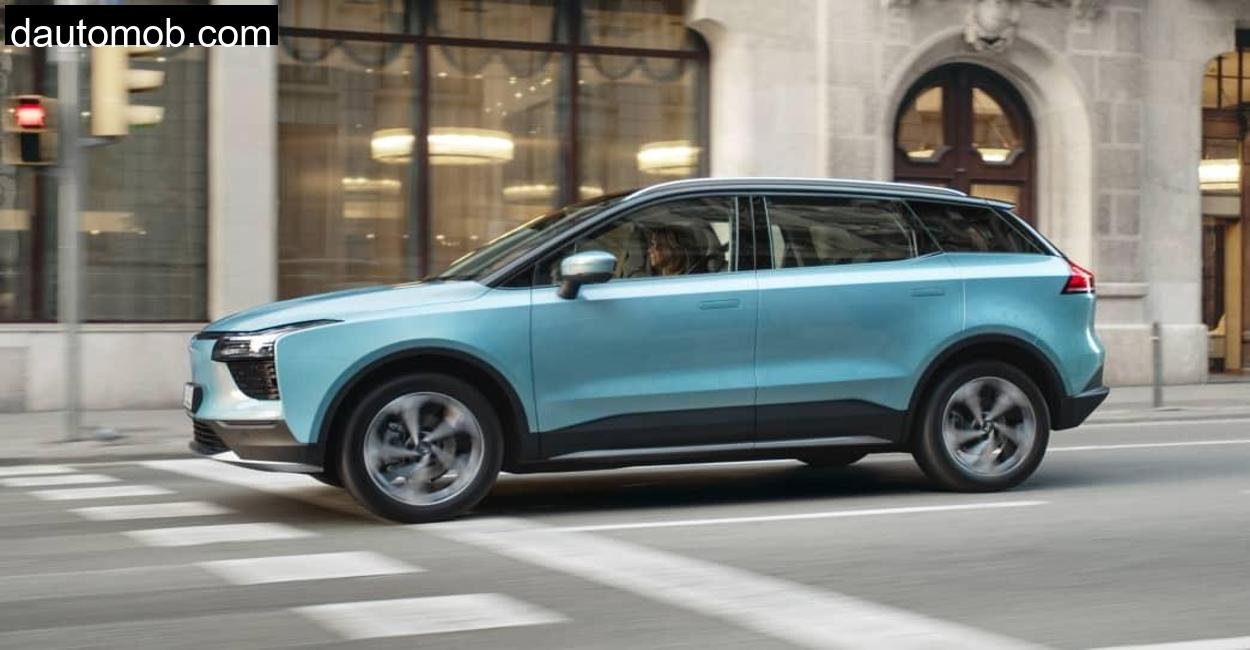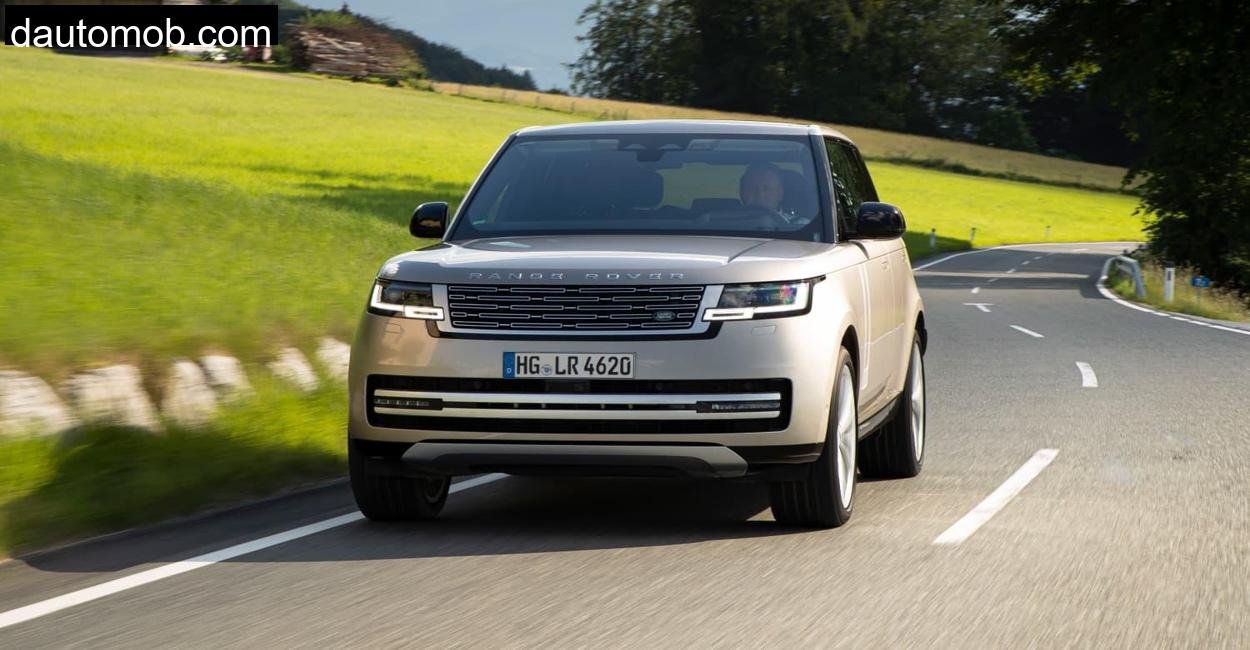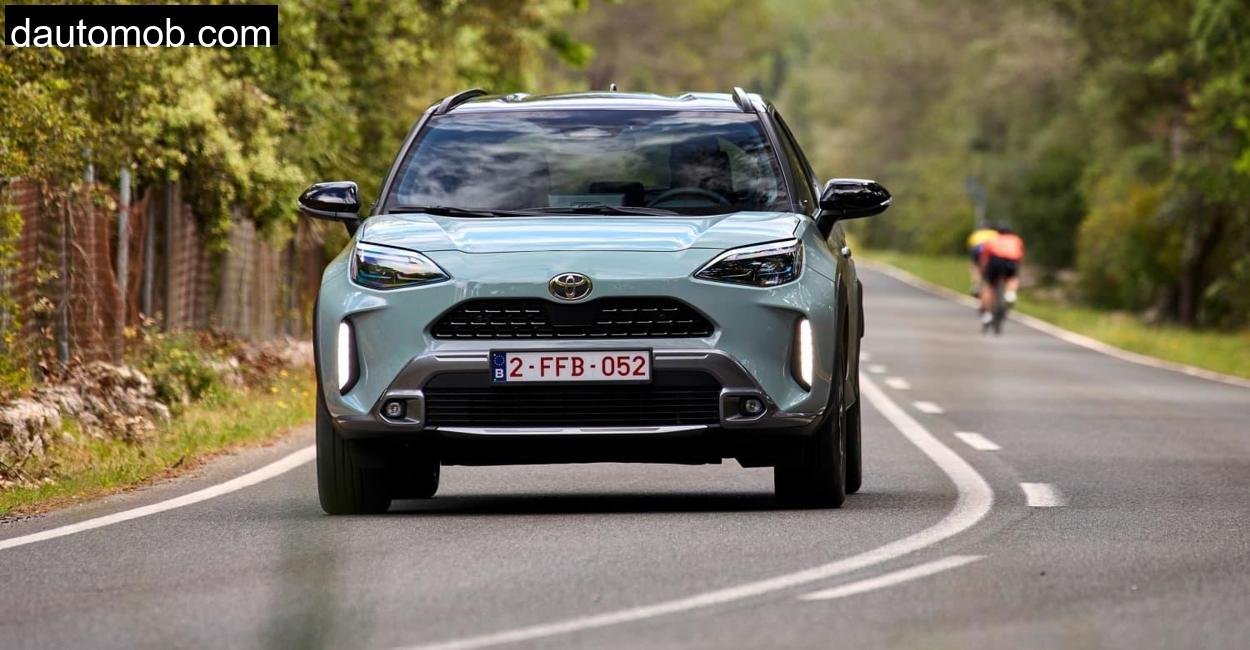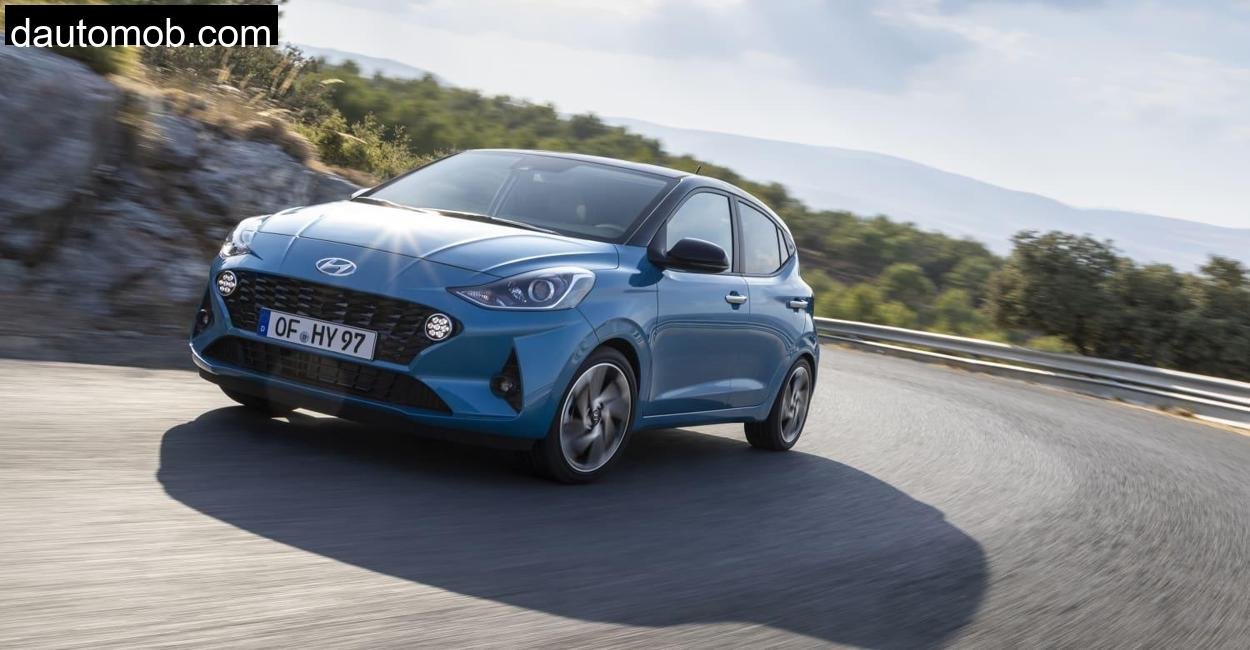It was late autumn when I took the Amarok deep into the Hümmling hills, a region of undulating forests and damp earth trails in northwestern Germany. A place that seems like it was drawn on a map specifically for off, road testing. The trees were still holding onto their copper, colored leaves, and the ground was spongy from days of rain. I pulled up to the trailhead, standing beside 2.4 tons of German, American engineering, wondering if the new Amarok would be more than a rebadged Ford Ranger.
Because that’s what this is: a Ford Ranger in Volkswagen clothing. But as I found out during my days in the Hümmling, it’s not quite that simple. Yes, the bones are Ford, but VW has added a few layers of finesse, style, and digital flash. The result is a curious mix, part workhorse, part lifestyle truck, all wrapped in a skin that tries very hard to look purely German.
Let’s dive in.
Amarok and Ranger: Separated at Birth?
If you squint at the new Amarok, especially from the side, you’ll think you’re looking at a Ranger. That’s because both trucks are built in South Africa at Ford’s Silverton plant, using the same ladder frame, same suspension components, same ten, speed transmission, and the same V6 turbo, diesel heart. But VW has reshaped the outer skin just enough to give the Amarok its own identity.
It’s a bit longer than before, 5.35 meters from bumper to bumper, and the wheelbase has stretched to 3.27 meters. This adds space in the cabin, more stability off, road, and a slightly larger footprint for carrying things. On that point: yes, it can haul a Euro pallet in the double cab, and two in the single cab, just like before. Payload’s up to 983 kilograms, towing maxes at 3.5 tons braked. Not just for show, then.
But back to the looks. The front is all VW, with an upright grille and clean lines. The wheel arches are still semi, circular like the old Amarok, and “AMAROK” is now stamped boldly into the tailgate metal like a cowboy’s signature on a saddle. It doesn’t scream utility. It whispers, “I climb mountain trails, but I also know good espresso.”
Real Driving: Big Pickup, Tiny Roads
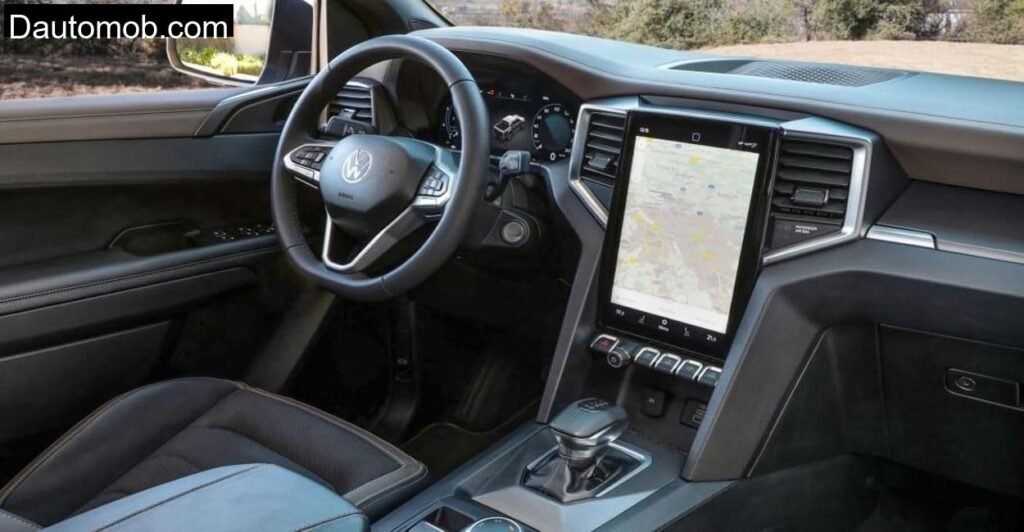
The real, world test began the moment I turned off the B401 and into the back roads snaking through Hümmling’s forest. With over 2.2 meters in width (mirrors out) and a turning circle of 13.5 meters, maneuvering the Amarok here felt like threading a bear through a doggy door. Every corner demanded a plan, every passing car required a wide breath and folded mirrors.
But the 3.0, liter V6 TDI didn’t flinch. With 600 Nm of torque peaking as low as 1750 rpm, the Amarok powered through mud, slick climbs and sharp switchbacks with a confidence that made me forget I was driving a 2.4, ton brick on wheels. The ten, speed auto, once warmed up, handled gear shifts with surgical precision. Though cold starts were jerky, the rest of the day it was smooth and decisive.
Traction was never an issue. This V6 comes only with all, wheel drive in Germany, and while Ford’s part, time 4WD underpins it, VW lets you choose between permanent and selectable systems depending on variant. I toggled through the six driving modes, Normal, Eco, Slippery, Mud/Ruts, Sand, and Towing, and stuck mostly with “Mud/Ruts.” It felt like the default mode for Hümmling’s leaf, strewn dirt trails.
Inside: Digital Cockpit in a Utility Jacket
I’ll say this: if you blindfolded me and dropped me in the driver’s seat, I’d think I was sitting in a VW Passat on stilts. Gone are the utility, focused analog dials of old. Instead, you get a massive 12, inch central touchscreen flanked by a fully digital instrument cluster. Crisp graphics, minimal lag, and a surprisingly intuitive interface. A far cry from the Ford’s button, heavy dash.
Below the screen are shortcut buttons, thank God, but climate controls are now touch, based. This, as I found, is less than ideal when bouncing down a gravel path while trying to warm the seat or defrost the screen. At least VW gave us a physical volume knob, a small mercy for old, school fingers.
My test car was the Style trim, which sits mid, range. That means leather seats (manually adjustable), wireless phone charging, and VW’s own infotainment skin over Ford’s SYNC base. The top, tier Aventura would’ve added Harman Kardon sound and electric seats, but frankly, the Style already felt upscale.
Space, wise, it’s generous up front. At 1.9 meters tall, I had legroom to spare. Headroom is also massive, both front and back. But three adults in the rear? Tight squeeze. Kids, dogs, or gear will fare better.
Performance: On, Road, Off, Road, and Everything In Between
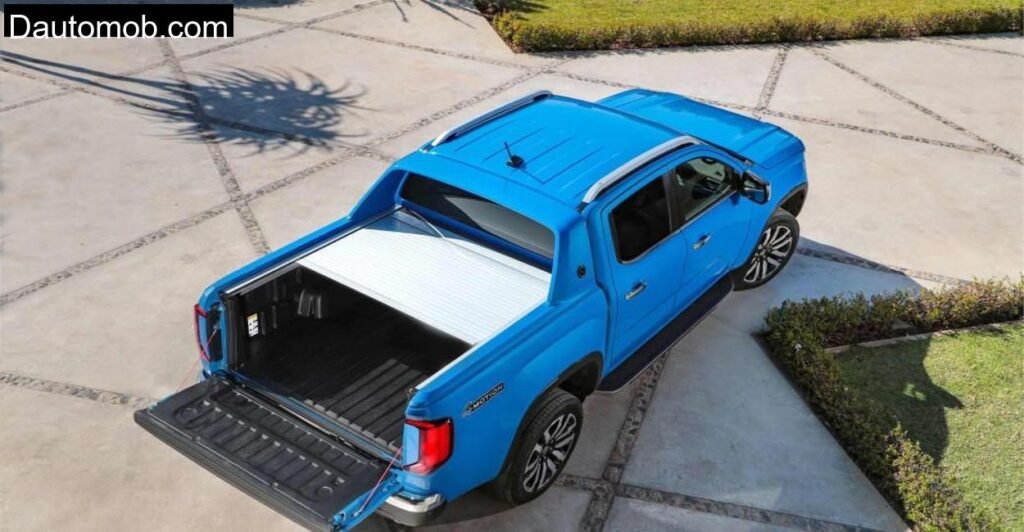
Let’s talk numbers. The V6 Amarok puts out 240 horsepower and tops out at 190 km/h. It gets from 0, 100 km/h in 8.8 seconds, which is impressive when you realize you’re basically driving a rolling boulder. In, gear acceleration is just as strong: 60, 100 km/h in 5.3 seconds, 80, 120 km/h in 7.4. Useful if you’re overtaking tractors on rural roads or merging onto the Autobahn.
But performance isn’t just about speed. It’s about control. Here, things are a mixed bag.
Steering is slow and vague, normal for a truck, but frustrating if you’re used to tight German sedans. On the ADAC avoidance test, it understeered early and responded sluggishly. The high, profile all, terrain tires don’t help, prioritizing grip on mud over asphalt precision.
Braking is another weak point. From 100 km/h to 0, the Amarok needed 41.7 meters. That’s nearly 10 meters longer than some compact cars. In wet conditions, you’d best leave plenty of room.
Still, credit where due: the ESP system works well, keeping this beast from stepping out when pushed. And when the trail turned gnarly, wet leaves, steep inclines, loose gravel, it clawed forward with calm determination.
Fuel Economy and Emissions: Oof.
Here’s where the Amarok feels like a relic of the past. According to the ADAC Ecotest, average fuel consumption sits at 10.2 liters per 100 km. During my test, which included off, road climbs and rural detours, I hovered around 11. That’s high, even for a V6 diesel.
CO₂ emissions? 265 g/km WLTP. Not exactly planet, friendly, though particulate and NOx levels are well, controlled thanks to modern after, treatment systems.
Still, if you buy a 3.5, ton tow truck expecting Prius numbers, you’re in the wrong showroom.
Tech and Safety: A Mixed Toolbox
The Amarok comes with a decent bundle of driver assists: adaptive cruise control, traffic sign recognition, lane, keeping assist, and matrix LED headlights dubbed IQ.Light. These worked reliably in my time behind the wheel.
Six terrain response modes, hill descent control, and a locking rear diff (on higher trims) make off, road antics easier, even for newbies.
What’s missing? Front parking sensors were finicky, and I would’ve appreciated a surround, view camera for navigating tight Hümmling trails. Some features are paywalled behind expensive trim levels too, which stings on a €70k truck.
Technical Specifications
All Volkswagen’s-related technical data is pulled straight from their official site for precision and credibility.
| Specification | VW Amarok 3.0 V6 TDI SCR Style 4MOTION |
| Engine Type | 3.0, liter V6 turbo, diesel |
| Power | 240 hp (177 kW) |
| Torque | 600 Nm @ 1750, 3250 rpm |
| Transmission | 10, speed automatic |
| Drive | All, wheel drive (4MOTION) |
| 0, 100 km/h | 8.8 seconds |
| Top Speed | 190 km/h |
| Fuel Consumption (WLTP) | 10.1 l/100 km |
| CO₂ Emissions (WLTP) | 265 g/km |
| Towing Capacity (Braked) | 3,500 kg |
| Payload | 983 kg |
| Length x Width x Height | 5,350 x 1,910 x 1,884 mm |
| Turning Circle | 13.5 m |
| Base Price (Germany) | €66,594 (as tested: ~€72,000) |
| Warranty | 5 years / 150,000 km (from 10/2024) |
Conclusion: Is It Still a VW?
After days in the hills, over ruts and gravel, on highways and narrow village lanes, the verdict came quietly, like the rustle of leaves on my windscreen: Yes, this is a Ford underneath. But it wears its Wolfsburg mask with surprising grace.
The Amarok V6 doesn’t try to be everything. It’s not efficient, not light, not nimble. But it is brutally capable, incredibly well, built, and, if you can accept its size and thirst, a proper tool that doubles as a status symbol in hiking boots.
It’s a Ford Ranger with German manners. And honestly? That’s not a bad thing at all.
Is the new VW Amarok just a Ford Ranger?
Yes and no. It shares its platform, drivetrain, and even some interior bits with the Ranger. But VW redesigned the exterior, re, skinned the interface, and fine, tuned some features for its own customer base.
Can Amarok handle serious off, roading?
Absolutely. With six drive modes, a locking rear diff (on some trims), and high ground clearance, the Amarok V6 handles rough trails with ease.
Should I buy the Amarok or the Ford Ranger?
If you want the best infotainment and value, go Ford. If you want a cleaner design, VW badge, and a more refined interior, pick the Amarok.
